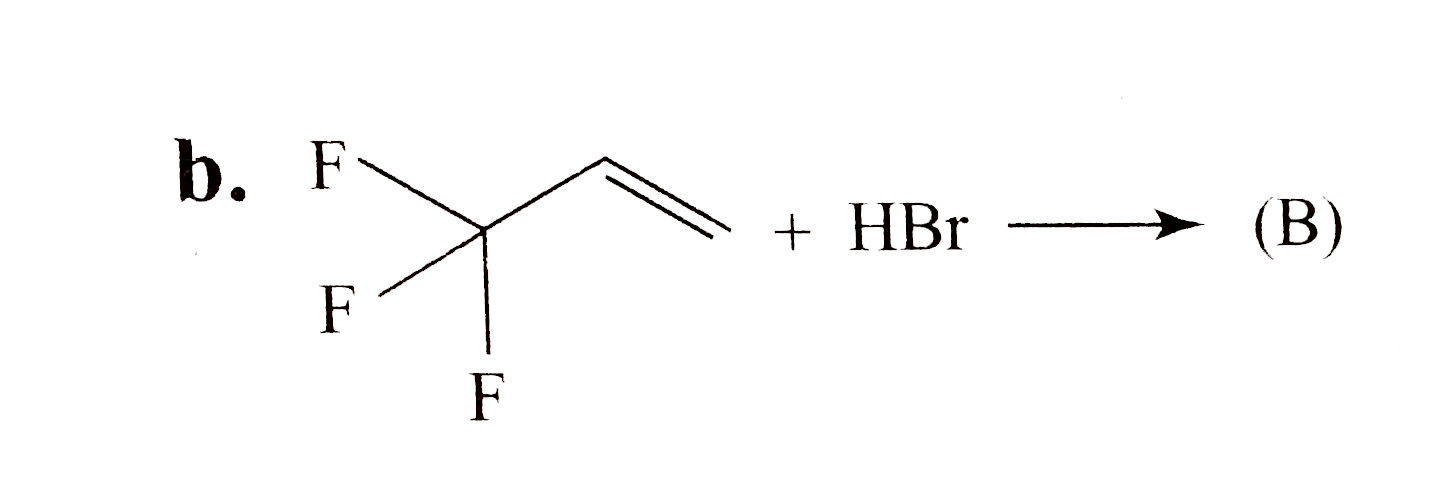Given the following reaction involving A,B,C and D
(i) C+B+→C++B
(ii) A−+D→ NO reaction
(iii) C++A→ NO reaction
(iv) D+B+→D++B
the correct arrangement of A,B,C,D in the order of their decreasing ability as reducing agent
D>B>C>A
A>C>D>B
C>A>B>D
C>A>D>B
The correct Answer is:D
To determine the correct arrangement of A, B, C, and D in order of their decreasing ability as reducing agents, we will analyze each of the given reactions step by step.
Step 1: Analyze the First Reaction
Reaction: C+B+→C++B
- In this reaction, B+ (which is in the +1 oxidation state) is reduced to B (0 oxidation state).
- Since C is oxidized to C+, it acts as a reducing agent.
- Conclusion: C is a stronger reducing agent than B.
- Result: C>B
Step 2: Analyze the Second Reaction
Reaction: A−+D→ No reaction
- The lack of reaction indicates that D cannot reduce A+ to A.
- This implies that D has less reducing power compared to A.
- Conclusion: A is a stronger reducing agent than D.
- Result: A>D
Step 3: Analyze the Third Reaction
Reaction: C++A→ No reaction
- Again, the absence of a reaction indicates that A cannot reduce C+ to C.
- This means C has a higher reducing power than A.
- Conclusion: C is a stronger reducing agent than A.
- Result: C>A
Step 4: Analyze the Fourth Reaction
Reaction: D+B+→D++B
- Here, B+ is reduced to B by D.
- This indicates that D has a higher reducing power than B.
- Conclusion: D is a stronger reducing agent than B.
- Result: D>B
Step 5: Combine the Results
From the conclusions drawn from each reaction, we have:
1. C>B (from Step 1)
2. A>D (from Step 2)
3. C>A (from Step 3)
4. D>B (from Step 4)
Now, we can summarize the relationships:
- From C>A and A>D, we can conclude C>A>D.
- From D>B, we can include B in the hierarchy.
Thus, we can arrange the reducing agents in the order of their decreasing ability:
- C>A>D>B
Final Answer
The correct arrangement of A, B, C, and D in the order of their decreasing ability as reducing agents is:
C > A > D > B
Reaction: C+B+→C++B
- Since C is oxidized to C+, it acts as a reducing agent.
- Conclusion: C is a stronger reducing agent than B.
- Result: C>B
Reaction: A−+D→ No reaction
- This implies that D has less reducing power compared to A.
- Conclusion: A is a stronger reducing agent than D.
- Result: A>D
Reaction: C++A→ No reaction
- This means C has a higher reducing power than A.
- Conclusion: C is a stronger reducing agent than A.
- Result: C>A
Reaction: D+B+→D++B
- This indicates that D has a higher reducing power than B.
- Conclusion: D is a stronger reducing agent than B.
- Result: D>B
From the conclusions drawn from each reaction, we have:
1. C>B (from Step 1)
2. A>D (from Step 2)
3. C>A (from Step 3)
4. D>B (from Step 4)
- From C>A and A>D, we can conclude C>A>D.
- From D>B, we can include B in the hierarchy.
- C>A>D>B
The correct arrangement of A, B, C, and D in the order of their decreasing ability as reducing agents is:
C > A > D > B
Topper's Solved these Questions
- REDOX REACTIONSBOOK - AAKASH INSTITUTE ENGLISHCHAPTER - REDOX REACTIONSEXERCISE - ASSIGNMENT SECTION - D
10 Videos
- REDOX REACTIONSBOOK - AAKASH INSTITUTE ENGLISHCHAPTER - REDOX REACTIONSEXERCISE - ASSIGNMENT SECTION - B
20 Videos
- PRINCIPLES OF QUALITATIVE ANALYSISBOOK - AAKASH INSTITUTE ENGLISHCHAPTER - PRINCIPLES OF QUALITATIVE ANALYSISEXERCISE - Assignment (SECTION H)
9 Videos
- SOLUTIONSBOOK - AAKASH INSTITUTE ENGLISHCHAPTER - SOLUTIONSEXERCISE - ASSIGMENT (SECTION-J) AAKASH CHALLENGERS QUESTIONS
10 Videos
Similar Questions
On the basis of given reactions,the correct order of increasing oxidising of A,B,C & D is. [(a)A−+B→A+B− , (b) C+D−→noreaction , (c) C−+B→noreaction, (d) D+A−→D−+A]
View SolutionIn the following reactions, identify the compounds A,B,C and D.
(i) PCl5+SO2→A+B
(ii) A+MeCOOH→C+SO2+HCl
(iii) 2C+Me2Cd→2D+CdCl2.
View SolutionComplete the following reactions :
a.
b.
c.
d.
e.
View SolutionIn the reaction sequences

A,B,C and D are given by the set:
View SolutionFor the reaction A+3B→C+D rate of reactions ∝[A][B]
View SolutionWrite the structures of A, B, C and D in the following reactions :

View SolutionFor the reaction,, 2A+B→C+D, the order of reaction is
View SolutionFor a reaction A+2B→C, rate is given by R=K[A][B]2. The order of reaction is:
View SolutionFor the reaction : A+2B→C+D, the expression of rate of reaction will be :
View SolutionFor the reaction, A(s)+3B(g)→4C(g)+d(l)ΔHandΔU are related as :
View Solution
